|
|
2009 Edition Chapter 3C. Roundabout Markings
Section 3C.01 General
Support:
01 A roundabout (see definition in Section 1A.13) is a specific type of circular intersection designed to control speeds and having specific traffic control features.
Guidance:
02 Pavement markings and signing for a roundabout should be integrally designed to correspond to the geometric design and intended lane use of a roundabout.
03 Markings on the approaches to a roundabout and on the circular roadway should be compatible with each other to provide a consistent message to road users and should facilitate movement through the roundabout such that vehicles do not have to change lanes within the circulatory roadway in order to exit the roundabout in a given direction.
Support:
04 Figure 3C-1 provides an example of the pavement markings for approach and circulatory roadways at a roundabout. Figure 3C-2 shows the options that are available for lane-use pavement marking arrows on approaches to roundabouts. Figures 3C-3 through 3C-14 illustrate examples of markings for roundabouts of various geometric and lane-use configurations.
Figure 3C-1 Example of Markings for Approach and Circulatory Roadways at a Roundabout
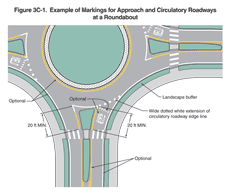
Figure 3C-2 Lane-Use Arrow Pavement Marking Options for Roundabout Approaches
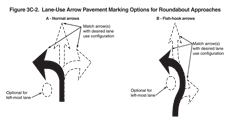
Figure 3C-3 Example of Markings for a One-Lane Roundabout
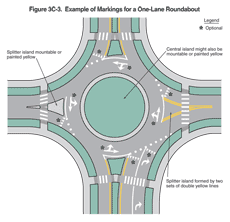
Figure 3C-4 Example of Markings for a Two-Lane Roundabout with One- and Two-Lane Approaches
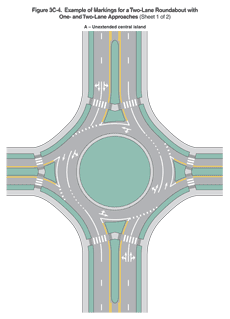
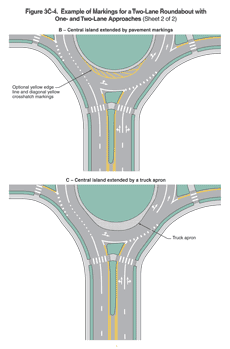
Figure 3C-5 Example of Markings for a Two-Lane Roundabout with One-Lane Exits
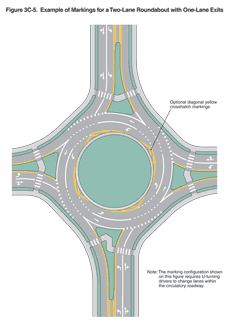
Figure 3C-6 Example of Markings for a Two-Lane Roundabout with Two-Lane Exits
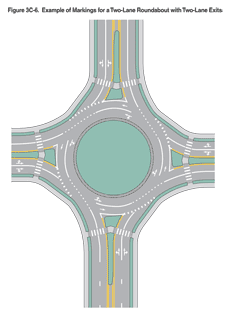
Figure 3C-7 Example of Markings for a Two-Lane Roundabout with a Double Left Turn
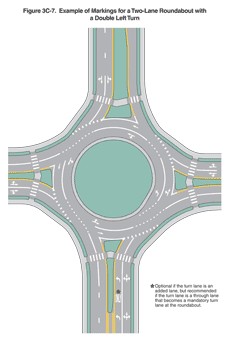
Figure 3C-8 Example of Markings for a Two-Lane Roundabout with a Double Right Turn
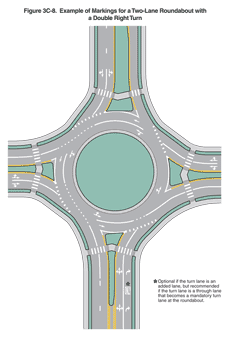
Figure 3C-9 Example of Markings for a Two-Lane Roundabout with Consecutive Double Left Turns

Figure 3C-10 Example of Markings for a Three-Lane Roundabout with Two- and Three-Lane Approaches
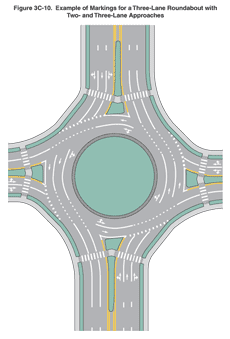
Figure 3C-11 Example of Markings for a Three-Lane Roundabout with Three-Lane Approaches
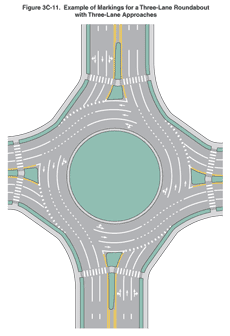
Figure 3C-12 Example of Markings for a Three-Lane Roundabout with Two-Lane Exits
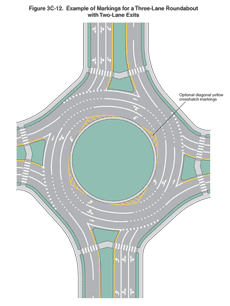
Figure 3C-13 Example of Markings for Two Linked Roundabouts
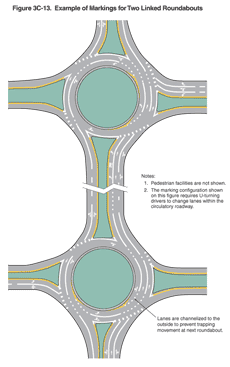
Figure 3C-14 Example of Markings for a Diamond Interchange with Two Circular-Shaped Roundabout Ramp Terminals
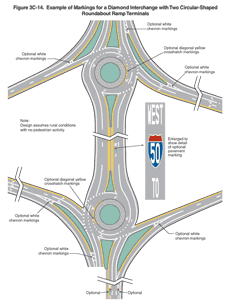
05 Traffic control signals or pedestrian hybrid beacons (see Part 4) are sometimes used at roundabouts to facilitate the crossing of pedestrians or to meter traffic.
06 Section 8C.12 contains information about roundabouts that contain or are in close proximity to grade crossings.
Section 3C.02 White Lane Line Pavement Markings for Roundabouts
Standard:
01 Multi-lane approaches to roundabouts shall have lane lines.
02 A through lane on a roadway that becomes a dropped lane (mandatory turn lane) at a roundabout shall be marked with a dotted white lane line in accordance with Section 3B.04.
Guidance:
03 Multi-lane roundabouts should have lane line markings within the circulatory roadway to channelize traffic to the appropriate exit lane.
Standard:
04 Continuous concentric lane lines shall not be used within the circulatory roadway of roundabouts.
Support:
05 Section 9C.04 contains information regarding bicycle lane markings at roundabouts.
Section 3C.03 Edge Line Pavement Markings for Roundabout Circulatory Roadways
Guidance:
01 A white edge line should be used on the outer (right-hand) side of the circulatory roadway.
02 Where a white edge line is used for the circulatory roadway, it should be as follows (see Figure 3C-1):
- A solid line adjacent to the splitter island, and
- A wide dotted line across the lane(s) entering the roundabout.
Standard:
03 Edge lines and edge line extensions shall not be placed across the exits from the circulatory roadway at roundabouts.
Option:
04 A yellow edge line may be placed around the inner (left-hand) edge of the circulatory roadway (see Figure 3C-1) and may be used to channelize traffic (see Drawing B of Figure 3C-4).
Section 3C.04 Yield Lines for Roundabouts
Option:
01 A yield line (see Section 3B.16) may be used to indicate the point behind which vehicles are required to yield at the entrance to a roundabout (see Figure 3C-1).
Section 3C.05 Crosswalk Markings at Roundabouts
Standard:
01 Pedestrian crosswalks shall not be marked to or from the central island of roundabouts.
Guidance:
02 If pedestrian facilities are provided, crosswalks (see Section 3B.18) should be marked across roundabout entrances and exits to indicate where pedestrians are intended to cross.
03 Crosswalks should be a minimum of 20 feet from the edge of the circulatory roadway.
Support:
04 Various arrangements of crosswalks at roundabouts are illustrated in the figures in this Chapter.
Section 3C.06 Word, Symbol, and Arrow Pavement Markings for Roundabouts
Option:
01 Lane-use arrows may be used on any approach to and within the circulatory roadway of any roundabout.
02 YIELD (word) and YIELD AHEAD (symbol or word) pavement markings (see Figure 3C-1) may be used on approaches to roundabouts.
03 Word and/or route shield pavement markings may be used on an approach to or within the circulatory roadway of a roundabout to provide route and/or destination guidance information to road users (see Figure 3C-14).
Guidance:
04 Within the circulatory roadway of multi-lane roundabouts, normal lane-use arrows (see Section 3B.20 and Figure 3B-24) should be used.
05 On multi-lane approaches with double left-turn and/or double right-turn lanes, lane-use arrows as shown in Figures 3C-7 and 3C-8 should be used.
Option:
06 If used on approaches to a roundabout, lane-use arrows may be either normal or fish-hook arrows, either with or without an oval symbolizing the central island, as shown in Figure 3C-2.
Section 3C.07 Markings for Other Circular Intersections
Support:
01 Other circular intersections include, but are not limited to, rotaries, traffic circles, and residential traffic calming designs.
Option:
02 The markings shown in this Chapter may be used at other circular intersections if engineering judgment indicates that their presence will benefit drivers, pedestrians, or other road users.
